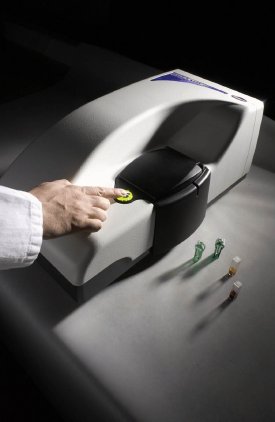Jul 25 2008
A research team led by Dr Oleg Gang at the Brookhaven Center for Functional Nanomaterials (CFN) in New York is using the Zetasizer Nano particle characterization system from Malvern Instruments in ground-breaking work that has demonstrated successful DNA-guided formation of ordered 3-D crystalline structures.
 The Zetasizer Nano particle characterization system from Malvern Instruments.
The Zetasizer Nano particle characterization system from Malvern Instruments.
DNA’s natural ability to self-assemble according to pre-programmed genetic codes within its pairing bases makes it the perfect architectural device for construction of novel crystalline structures. The ability to engineer such 3-D structures enables the production of functional materials that take advantage of the unique properties that may exist at the nanoscale - for example, enhanced magnetism, improved catalytic activity, or new optical properties
Dr. Gang and his team have succeeded in building open, DNA stabilized 3D ordered structures and clusters from nanoparticles. This structure will be also able to incorporate additional small molecules, proteins or polymers within a 3D matrix. They achieved this by tuning the balance, between the attractive force provided by complementary outer-shell DNA regions with the repulsive force of non-complementary DNA or inner-shell DNA spacers. The resulting interactions lead to various morphologies of assemblies, including particle organization with crystalline order and regulated clustering, containing from millions to single particles per cluster.
DNA-guided self-assembly of nanoparticles is predominantly controlled by the surface fraction of DNA on each particle, irrespective of particle size. The Dynamic Light Scattering (DLS) kinetic profiles and aggregate size distribution data provided by the Zetasizer Nano, together with information from other techniques, were used in sample analysis. The results demonstrate that any particle size increase resulting from increased average surface coverage of DNA strands is balanced by a loss in entropic interDNA interaction due to an increase in the particle’s surface curvature.
Malcolm Connah, Product Manager Nanometrics at Malvern Instruments, is delighted that the Zetasizer Nano is being used in such inspirational research. “The work of Dr Gang and his team lays the foundation for numerous and diverse advances in nanotechnology,” he said. “This is an exciting prospect and Malvern is very pleased that the Zetasizer Nano is making such a valuable contribution.”